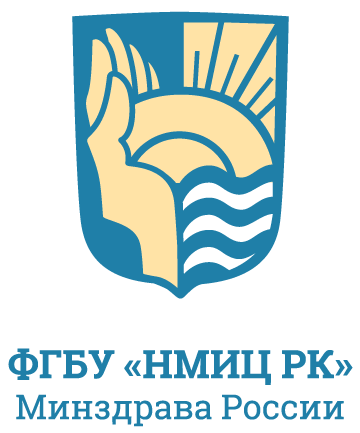Выпуск 23-3, 2024
Оригинальная статья
Улучшение качества сна при неалкогольной жировой дистрофии печени с помощью комбинированных аэробных тренировок с ускорением силы тяжести: рандомизированное контрольное исследование
1 ![]() Фахми Л.М., 1
Фахми Л.М., 1 ![]() Абдель Хади А.А., 2
Абдель Хади А.А., 2 ![]() Али А.А., 3
Али А.А., 3 ![]() Али А.Х., 1
Али А.Х., 1 ![]() Абд-аль-хасиб Г.А
Абд-аль-хасиб Г.А
1 Кафедра физической терапии сердечно-сосудистых, респираторных заболеваний и гериатрии, факультет
физической терапии, Каирский университет, Гиза, Египет
2Кафедра внутренних болезней, Научно-исследовательский институт Теодора Билхарза, Каирский университет,
Гиза, Египет
3Кафедра физической терапии фундаментальных наук, факультет физической терапии, Каирский университет,
Гиза, Египет
РЕЗЮМЕ
ВВЕДЕНИЕ. Физические упражнения являются важнейшим и хорошо зарекомендовавшим себя компонентом изменения образа жизни для борьбы с неалкогольной жировой болезнью печени (НЖБП). Ускоряющая тренировка (УТ) предполагает активацию скелетных мышц за счет повышенного гравитационного ускорения с помощью вибрации, что делает ее рекомендованным терапевтическим вмешательством.
ЦЕЛЬ. Определить влияние сочетания тренировок с ускорением силы тяжести и аэробных упражнений на качество сна и функцию печени при НЖБП.
МАТЕРИАЛЫ И МЕТОДЫ. В рандомизированном контрольном исследовании приняли участие 60 пациенток с НЖБП в возрасте 35–45 лет из больницы общего профиля Аль-Шрук в Каире. Участники были распределены методом случайного отбора поровну на две группы: пациенты группы А (контрольная группа) получали аэробные упражнения, пациенты группы В (экспериментальная группа) — тренировки с ускорением силы тяжести и аэробные упражнения и выполняли трехмесячную программу. До и после вмешательств качество сна оценивалось с помощью Питтсбургского индекса качества сна (ПИКС), функция печени — путем измерения уровня печеночных ферментов аланинтрансаминазы (АЛТ) и аспартаттрансферазы (АСТ) в крови.
РЕЗУЛЬТАТЫ. Как показатели ПИКС (p < 0,05), так и уровень фермента АЛТ были значительно улучшены (p составил 0,005 и 0,006 соответственно) в группах А и В после трехмесячной программы вмешательства. Однако уровни АСТ в обеих группах изменились незначительно (p составил 0,569 и 0,027 соответственно).
ЗАКЛЮЧЕНИЕ. Сочетание аэробных упражнений и с тренировками с ускорением силы тяжести может принести наибольшую клиническую пользу пациентам с НЖБП.
КЛЮЧЕВЫЕ СЛОВА: неалкогольная жировая болезнь печени, тренировки с ускорением силы тяжести, аэробные упражнения, вибрация тела, качество сна
ИСТОЧНИК ФИНАНСИРОВАНИЯ: Данное исследование не было поддержано никакими внешними источниками финансирования
КОНФЛИКТ ИНТЕРЕСОВ: Авторы декларируют отсутствие явных и потенциальных конфликтов интересов, связанных с публикацией настоящей статьи.
ДЛЯ ЦИТИРОВАНИЯ:
Fahmy L.M., Abd-al Hady A.A., Ali A.A, Ali A.H., Abd-Elhaseeb G.A. Enhancing Sleep Quality in Non-Alcoholic Fatty Liver with Combined Accelerated Aerobic Training: a Randomized Control Study. Bulletin of Rehabilitation Medicine. 2024; 23(3):14-20. https://doi.org/10.38025/2078-1962-2024-23-3-14-20
ДЛЯ КОРРЕСПОНДЕНЦИИ:
Gehad A. Abd-Elhaseeb, E-mail: dr.gpt111@cu.edu.eg
Список литературы:
- Thorp A., Stine J.G. Exercise as Medicine: The Impact of Exercise Training on Nonalcoholic Fatty Liver Disease. Current Hepatology Reports. 2020; 19(4): 402–411. https://doi.org/10.1007/s11901-020-00543-9
- Heidari Z., Gharebaghi A. Prevalence of Non Alcoholic Fatty Liver Disease and its Association with Diabetic Nephropathy in Patients with Type 2 Diabetes Mellitus. Journal of Clinical and Diagnostic Research. 2017; 11(5): OC04–OC07. https://doi.org/10.7860/jcdr/2017/25931.9823
- Yu J.H., Ahn J.H., Yoo H.J., et al. Obstructive sleep apnea with excessive daytime sleepiness is associated with non-alcoholic fatty liver disease regardless of visceral fat. The Korean Journal of Internal Medicine. 2015; 30(6): 846–855. https://doi.org/10.3904/kjim.2015.30.6.846
- Zarean E., Looha MA., Amini P., et al. Sleep characteristics of middle-aged adults with non-alcoholic fatty liver disease: findings from the Shahrekord PERSIAN cohort study. BMC Public Health. 2023; 23(1): 312. https://doi.org/10.1186/s12889-023-15251-4
- Houghton D., Thoma C., Hallsworth K., et al. Exercise Reduces Liver Lipids and Visceral Adiposity in Patients with Nonalcoholic Steatohepatitis in a Randomized Controlled Trial. Clinical Gastroenterology and Hepatology. 2017; 15(1): 96–102.e3. https://doi.org/10.1016/j.cgh.2016.07.031
- Chalasani N., Younossi Z., Lavine J.E., et al. The diagnosis and management of non-alcoholic fatty liver disease: practice Guideline by the American Association for the Study of Liver Diseases, American College of Gastroenterology, and the American Gastroenterological Association. American Journal of Gastroenterology. 2012; 55(6): 2005–2023. https://doi.org/10.1038/ajg.2012.217
- Risikesan J., Heebøll S., Kumarathas I., et al. Exercise increases myocardial free fatty acid oxidation in subjects with metabolic dysfunction-associated fatty liver disease. Atherosclerosis. 2023; 372: 10–18. https://doi.org/10.1016/j.atherosclerosis.2023.03.015
- Huh J.Y., Mougios V., Skraparlis A., et al. Irisin in response to acute and chronic whole-body vibration exercise in humans. Metabolism. 2014; 63(7): 918–921. https://doi.org/10.1016/j.metabol.2014.04.001
- Patel H., Alkhawam H., Madanieh R., et al. Aerobic vs anaerobic exercise training effects on the cardiovascular system. World Journal of Cardiology. 2017; 9(2): 134–138. https://doi.org/10.4330/wjc.v9.i2.134
- Keating S.E., Sabag A., Hallsworth K., et al. Exercise in the Management of Metabolic-Associated Fatty Liver Disease (MAFLD) in Adults: A Position Statement from Exercise and Sport Science Australia. Sports Medicine. 2023; 53(12): 2347–2371. https://doi.org/10.1007/s40279-023-01918-w
- Johnson N.A., George J. Fitness versus fatness: moving beyond weight loss in nonalcoholic fatty liver disease. Hepatology. 2010; 52(1): 370–381. https://doi.org/10.1002/hep.23711
- Oh S., Shida T., Sawai A., et al. Acceleration training for managing nonalcoholic fatty liver disease: a pilot study. Therapeutics and Clinical Risk Management 2014; 10: 925–936. https://doi.org/10.2147/tcrm.s68322
- Ibrahim A.A., Abdelbasset W.K. The role of physical exercise in treating people with non- alcoholic fatty liver disease. Journal of Advanced Pharmacy Education and Research. 2020; 10(2): 64–70.
- Reis-Silva A., Coelho-Oliveira A.C., Martins-Anjos E., et al. Impact of Two Whole-Body Vibration Exercise Protocols on Body Composition of Patients with Metabolic Syndrome: A Randomized Controlled Trial. International Journal of Environmental Research and Public Health. 2022; 20(1): 436. https://doi.org/10.3390/ijerph20010436
- Oh S., Oshida N., Someya N., et al. Whole-body vibration for patients with nonalcoholic fatty liver disease: a 6-month prospective study. The Physiological Reports. 2019; 7(9): e14062. https://doi.org/10.14814/phy2.14062
- Dossoki M.A., Abd Alhady A.A., Amer K.A., et al. Effect of Moderate Aerobic Exercises on Liver Function in Non-Alcoholic Fatty Liver Disease in University Students. Egyptian Journal of Physical Therapy. 2020; 2(1): 1–8. https://doi.org/10.21608/ejpt.2020.25632.1004
- Colantonio E., Kiss MAPDM. Is the HRmax = 220 − age equation valid to prescribe exercise training in children? Journal of Exercise Physiology online. 2013; 16(1): 19–27.
- Zhang C., Zhang H., Zhao M., et al. Reliability, Validity, and Factor Structure of Pittsburgh Sleep Quality Index in Community-Based Centenarians. Frontiers in Psychiatry. 2020; 11: 573530. https://doi.org/10.3389/fpsyt.2020.573530
- Glass O.K., Radia A., Kraus W.E., et al. Exercise Training as Treatment of Nonalcoholic Fatty Liver Disease. Journal of Functional Morphology and Kinesiology. 2017; 2(4): 35. https://doi.org/10.3390/jfmk2040035
- Shamsoddini A., Sobhani V., Ghamar Chehreh M.E., et al. Effect of Aerobic and Resistance Exercise Training on Liver Enzymes and Hepatic Fat in Iranian Men With Nonalcoholic Fatty Liver Disease. Hepatitis Monthly. 2015; 15(10): e31434. https://doi.org/10.5812/hepatmon.31434
- Hoseini Z., Behpour N., Hoseini R. Co-treatment with Vitamin D Supplementation and Aerobic Training in Elderly Women with Vit D Deficiency and NAFLD: A Single-blind Controlled Trial. Hepatitis Monthly. 2020; 20(2): e96437. https://doi.org/10.5812/hepatmon.96437
- Banno M., Harada Y., Taniguchi M., et al. Exercise can improve sleep quality: a systematic review and meta-analysis. PeerJ. 2018; 6: e5172. https://doi.org/10.7717/peerj.5172
- Xie Y., Liu S., Chen X.J., et al. Effects of Exercise on Sleep Quality and Insomnia in Adults: A Systematic Review and Meta-Analysis of Randomized Controlled Trials. Frontiers in Psychiatry. 2021; 12: 664499. https://doi.org/10.3389/fpsyt.2021.664499
- D’Aurea C.V.R., Frange C., Poyares D., et al. Physical exercise as a therapeutic approach for adults with insomnia: systematic review and meta-analysis. Einstein (Sao Paulo). 2022; 20: eAO8058. https://doi.org/10.31744/einstein_journal/2022ao8058
- Barrón-Cabrera E., Soria-Rodríguez R., Amador-Lara F., et al. Physical Activity Protocols in Non-Alcoholic Fatty Liver Disease Management: A Systematic Review of Randomized Clinical Trials and Animal Models. Healthcare. 2023; 11(14): 1992. https://doi.org/10.3390/healthcare11141992
- Torres-Nunes L., da Costa-Borges P.P., Paineiras-Domingos L.L., et al. Effects of the Whole-Body Vibration Exercise on Sleep Disorders, Body Temperature, Body Composition, Tone, and Clinical Parameters in a Child with Down Syndrome Who Underwent Total Atrioventricular Septal Defect Surgery: A Case-Report. Children (Basel). 2023; 10(2): 213. https://doi.org/10.3390/children10020213

Контент доступен под лицензией Creative Commons Attribution 4.0 License.
©
Эта статья открытого доступа по лицензии CC BY 4.0. Издательство: ФГБУ «НМИЦ РК» Минздрава России.




